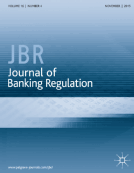This paper examines the Colombian banking crisis of the late 1990s through the lens of modern resolution policy, offering insights into how authorities managed systemic risk in the absence of robust financial and institutional resources. While much of the existing literature focuses on the macroeconomic consequences of the crisis—such as negative growth, public debt sustainability and private sector contraction—this study shifts the focus to the resolution framework itself. We provide an updated estimate of the fiscal costs of the crisis, detailing the origin and allocation of public resources, and analyze the legal and institutional mechanisms used to resolve failing banks. Drawing on the Financial Stability Board’s Key Attributes of Effective Resolution Regimes, we assess the Colombian response in terms of its alignment with international best practices. Our findings reveal that, despite lacking key instruments such as bridge banks and purchase-and-assumption (P&A) tools, Colombian authorities demonstrated creativity and adaptability. Their actions laid the groundwork for a more resilient financial system, though the absence of certain resolution tools likely prolonged the crisis and increased its complexity. This case offers valuable lessons for emerging markets seeking to strengthen their resolution regimes in line with global standards.

 Clark Grangera,
Clark Grangera,  María Inés Agudelo-Valenciae
María Inés Agudelo-Valenciae